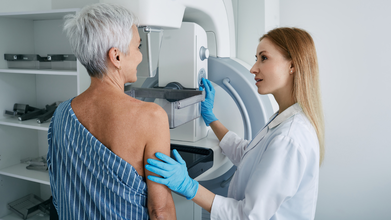- Health Conditions A-Z
- Health & Wellness
- Nutrition
- Fitness
- Health News
- Ayurveda
- Videos
- Medicine A-Z
- Parenting
Eat These 8 Foods At Restaurants With Caution; Can Lead To Serious Health Risks

Eating Restaurant Foods Carefully (Credit-Canva)
Dining out is a popular pastime, but it's essential to be aware of potential food safety risks. We all have our go to foods whenever we are at a restaurant and enjoy the prospect of getting to eat their favorite meal. But even in the most high-end restaurants, the risk of getting sick always lingers. You never know when or what may cause issues for you
Food poisoning is a common problem that can lead to things like nausea, diarrhea, vomiting, and stomach upset. The Centers for Disease Control and Prevention (CDC) estimates that about 48 million people in the United States get sick from food poisoning each year. While sometimes it is unavoidable, being aware of these things can help you understand things that can go wrong and taking precautions when eating at restaurants. It's crucial to be informed to protect your health and enjoy your dining experience without worry. Here are some foods you should either avoid or be careful while eating.
Foods You Should Be Careful About While Dining Out
Eggs
Even eggs that look fine can have Salmonella bacteria. These bacteria can make you sick with stomach cramps, diarrhea, fever, and vomiting. Restaurants can cause outbreaks if they don't cook eggs to 160 degrees Fahrenheit, store them at the wrong temperature, use unpasteurized eggs, or use dirty cooking tools. These bad practices let bacteria grow and make people sick. So, it's important to cook and handle eggs the right way.
Pre-Cut Melons
Melons that are cut up ahead of time, like in fruit salads, are more likely to cause food poisoning. When you cut a melon, bacteria on the outside can get to the inside. If lots of fruit is cut in one place, it's easier for bacteria to spread. Since people eat melons raw, there's no cooking to kill the germs. These germs, like Listeria, Salmonella, or E. coli, can make you really sick. So, be careful with pre-cut melons.
Sprouts
Sprouts are healthy, but they grow in warm, wet places where bacteria like Listeria like to live. Even washing sprouts doesn't always get rid of these germs. And because people usually eat sprouts raw, there's no cooking to kill the bacteria. This makes sprouts a big cause of food poisoning. There have been lots of outbreaks linked to sprouts, with many people getting sick and even ending up in the hospital. So, it's a good idea to avoid sprouts, especially at restaurants.
Undercooked Meat
Meat that isn't cooked enough can have harmful bacteria like Salmonella, E. coli, and Campylobacter. Campylobacter is a common cause of diarrhea. Ground beef is extra risky because it's often made from meat from many different cows. If one cow is sick, all the ground beef can be contaminated. While quickly cooking the outside of a steak can kill surface germs, undercooked ground beef and other meats are still dangerous. Cooking meat all the way through is super important.
Fishes
Some fish can cause specific kinds of food poisoning. Ciguatera poisoning happens when you eat fish that ate poisonous algae, like grouper, sea bass, and red snapper. Cooking doesn't get rid of these poisons. Scombroid poisoning can happen if fish like tuna, sardines, and mahi-mahi aren't stored correctly, which lets bacteria make poisons. Cooking doesn't help with this either. It's important for restaurants to get their fish from good places and keep it stored at the right temperature.
Oyster
Oysters filter water, which means they can collect bacteria and viruses. A big risk is vibriosis, which is caused by Vibrio bacteria that live in warm ocean water where oysters grow. Eating raw or undercooked oysters is very risky. These bacteria can cause serious sickness, and sometimes even infections in the blood. Cooking oysters completely to at least 145 degrees Fahrenheit makes them much safer. So, cooked oysters are a better choice.
Leafy Greens
Greens like lettuce and spinach can get contaminated with bacteria from things like dirty water, animal poop, and not handling them correctly. Even washing them might not get rid of all the germs, especially if they're inside the leaves. Bacteria can grow fast on greens that are wilted or slimy. Restaurants need to get their greens from good farms, wash them really well, and store them correctly. Choosing fresh, crispy greens helps reduce the risk.
Steer clear of certain food items in buffets
Buffets have a higher chance of food poisoning for a few reasons. Many people use the same serving spoons, which spreads germs. Food can sit out for too long at the wrong temperature, letting bacteria grow. Also, people might cough or sneeze near the food. Common germs at buffets include bacteria like E. coli, Salmonella, and Listeria, and viruses like norovirus. Restaurants need to check food temperatures, change serving spoons often, and make sure everyone is washing their hands.
Essential Tests Every Woman Should Go Through Before 2025 Ends

Credits: iStock
As the year draws to a close and 2026 approaches, most women find themselves juggling work deadlines, family responsibilities, and festive plans. In the middle of it all, personal health often slips to the bottom of the list. But doctors say this is exactly the time to pause and take stock of your body, especially your reproductive and hormonal health.
“Annual gynecological screening is one of the simplest ways to prevent silent illnesses, detect early changes, and understand your reproductive health better,” says Dr Tanveer Aujla, Consultant Obstetrician and Gynecologist at Motherhood Hospitals, Noida. Many common conditions show little to no symptoms in the early stages, making routine testing crucial.
Why yearly gynecological check-ups matter
Women often ignore subtle signs like fatigue, irregular periods, unexplained weight changes, or mood swings, assuming they are part of a busy lifestyle. According to Dr Aujla, this delay can be risky. “Conditions like cervical abnormalities, breast lumps, thyroid disorders, vitamin deficiencies, or hormonal imbalance often develop quietly and show symptoms only later,” she explains. A yearly check-up helps catch problems early and allows women to plan their health with confidence, especially if pregnancy is on the horizon.
Pap smear and HPV testing for cervical health
One of the most important screenings is the Pap smear combined with HPV testing. The Pap test looks for abnormal cells on the cervix, while the HPV test detects high-risk viruses responsible for most cervical cancers. “Together, they form a powerful screening tool,” Dr Aujla says. Women between 25 and 65 years should undergo this test every three to five years, or as advised by their doctor.
Breast screening for early detection
Breast health should never be overlooked. Dr Aujla advises yearly mammograms for women above 40, along with clinical breast examinations or ultrasound scans when needed. “These screenings help identify lumps, cysts, or early tissue changes,” she notes. She also stresses the importance of monthly self-examination to check for lumps, pain, or changes like inverted nipples.
Thyroid testing for unexplained symptoms
Thyroid disorders are extremely common in women and often remain undiagnosed. “A simple TSH, T3, and T4 test can explain symptoms like fatigue, mood swings, irregular periods, weight changes, or fertility issues,” says Dr Aujla. Early diagnosis can significantly improve quality of life and prevent long-term complications.
Fertility markers and preconception screening
Tests like AMH offer insight into ovarian reserve and help women plan their reproductive timelines. Dr Aujla points out that this is especially important for women with PCOS, irregular cycles, or delayed family planning. Preconception screening, which includes anemia levels, vitamin D, rubella immunity, blood sugar, and hormonal panels, ensures the body is prepared for a safe pregnancy.
Other essential health screenings
Women over 30 or those with a sedentary lifestyle should also get diabetes and cholesterol tests. Bone health panels checking calcium and vitamin D help prevent future osteoporosis. STI screening is equally important, as infections like chlamydia or gonorrhea can silently damage reproductive health if left untreated.
“Whether you are planning pregnancy or simply want to stay healthy, these tests offer clarity, confidence, and peace of mind,” Dr Aujla concludes. Taking time for these screenings before the year ends is a small step that can protect your health for years to come.
Is Santa Claus Bad for Your Health? Here’s Why a Doctor Is Raising Concerns Ahead of Christmas

Credits: iStock
Santa Claus is bad for your health! This is a statement by Dr Nathan Grills, a Public Health Fellow in the Department of Epidemiology and Preventative Medicine, Monash University, Australia. Why is he saying this right ahead of Christmas?
Writing for an article in the British Medical Journal's Christmas issue (BMJ), he says, "Santa only needs to affect health by 0.1% to damage million of lives". He says it would be better if his popularity was rather used to promote healthy living.
Why Is Santa Claus Unhealthy?
Santa Claus's portrayal is where the concerns lie. This was not the first time someone has talked about. In fact, The Conversation in December 2024, talked about this exactly. If you look at Santa, he stands anywhere between 5'6" to 6'6" and weighs between 80Kgs to 136Kgs. He also carries a lot of weight around his belly, which, some may say, keeps him insulated as he sleighs through the snowy lands, but is sure overweight and obese. These portrayal promotes an unhealthy living.
Dr Grils also writes that Santa should rather share Rudolf's snack of carrots and celery sticks than brandy and mince pies, and swap his reindeer for a bike or a walk.
After reviewing existing literature and online sources to understand Santa Claus’s possible impact on public health, the analysis found no peer-reviewed studies directly addressing the issue. What did stand out, however, was the exceptionally high level of awareness of Santa among children. In fact, surveys of American schoolchildren showed that Santa Claus was recognized more widely than almost any other fictional character, second only to Ronald McDonald.
The doctor says that Santa is also used for selling products, which are mostly harmful, and this happens on global scale, which means, people get inspired. "Santa sells, and sometimes he sells harmful products. Like Coca-Cola, Santa has become a major export item to the developing world."
While Santa has been banned from smoking, but his images of enjoying a pipe or cigar are easily found on Christmas cards. The depiction of Santa does form a public perception, argues the doctor.
Dr Grill also notes that Santa may be promoting potential drink-driving, especially when someone follows the tradition to leave him a brandy to wish him well on his travels, while he has billion houses to visit.
Can Santa Spread Diseases?

Dr Grill says that he can spread diseases. If Santa sneezes or coughs around 10 times a day, all the children who sit on his lap may also end up catching the flu along with their Christmas presents.

However, it is important to note that these are views expressed by the doctor and no actual studies have been conducted on the same, Though Dr Grill does indicate for more research before calling for authorities to regulate Santa's activities. For now, Dr Grill proposes a new image for Santa, a healthier one. A slim Santa on a treadmill.
Did You Know The Role Appendix Plays In Your Body? It Is More Important Than You Think

Credits: iStock
For years, the appendix was brushed off as a useless leftover from human evolution. Many of us grew up believing that it served no real purpose and was better off removed at the first sign of trouble. But science now tells a more interesting story. This small, finger-like pouch attached to the large intestine quietly supports gut health and immunity in ways that were long overlooked.
What exactly is the appendix?
The appendix is a narrow tube connected to the cecum, located in the lower right side of the abdomen. It usually measures between 7 and 10 cm, although its size and position can vary widely from person to person. In some people, it may be just a couple of centimeters long, while in others, it can extend much further. This variation is also why appendicitis pain can sometimes feel confusing or atypical.
Not useless after all
The biggest shift in understanding the appendix came from research into gut bacteria. The appendix appears to act as a safe storage space for beneficial microbes. During bouts of severe diarrhea or intestinal infections, large amounts of gut bacteria are flushed out. The appendix helps reintroduce these good bacteria once the illness passes, helping the digestive system recover faster.
It also plays a role in immunity, especially during early life. The appendix contains lymphoid tissue, which exposes immune cells to substances passing through the gut. This helps the body learn how to respond to harmful invaders while tolerating harmless ones. While humans can survive perfectly well without an appendix, its presence offers subtle support to the immune and digestive systems.
Why appendicitis happens
Despite its benefits, the appendix is still prone to inflammation. Appendicitis is one of the most common abdominal emergencies worldwide. It usually occurs when the appendix gets blocked, often due to hardened stool, infection, or rarely, abnormal growths. Once blocked, bacteria multiply, causing swelling, pain, and infection.
The classic warning sign is pain that starts near the belly button and gradually shifts to the lower right abdomen. This may be accompanied by fever, nausea, vomiting, and loss of appetite. Ignoring these symptoms can be dangerous. If left untreated, the appendix can rupture, leading to serious and potentially life-threatening complications.
Busting Common Myths
There are many myths surrounding the appendix. One of the most common is that fruit seeds or spicy food cause appendicitis. There is no evidence to support this. Another misconception is that appendicitis can settle on its own. While pain may temporarily reduce, the underlying inflammation usually worsens.
Many people also worry that removing the appendix will harm digestion or require lifelong dietary restrictions. In reality, most people return to normal eating habits and daily routines after recovery, with no long-term health issues.
How appendicitis is treated
Surgery remains the most reliable treatment for appendicitis. Today, minimally invasive techniques such as laparoscopic or robotic surgery are widely used. These involve small incisions, less pain, quicker recovery, and shorter hospital stays. In complicated cases, open surgery may still be required.
In selected cases of mild, uncomplicated appendicitis, antibiotics may be used initially. However, studies show that while symptoms may improve, there is a higher chance of recurrence within months. For this reason, surgery continues to be the definitive, long-term solution for most patients.
Recovery after appendix removal is usually smooth. Many patients are able to walk the same day and return home within a day or two. Light meals are recommended initially, and heavy lifting is avoided for a few weeks. Long-term lifestyle changes are rarely needed, and most people forget about the surgery entirely once healed.
© 2024 Bennett, Coleman & Company Limited

